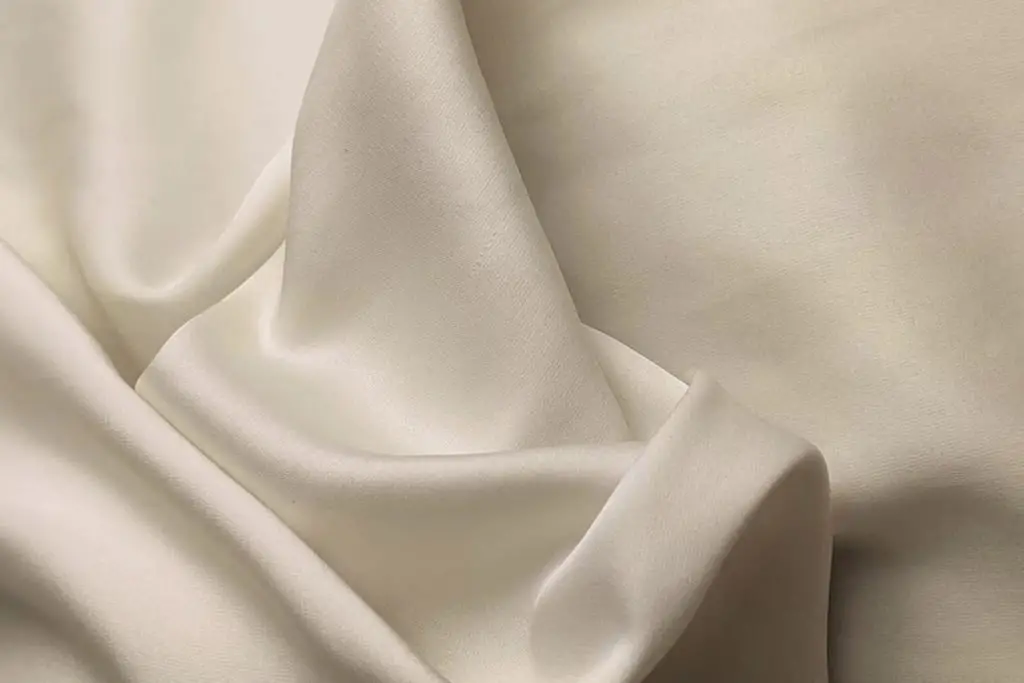What is the best material for a hammock? People use different materials depending on what they want to do with their hammocks.
Rope hammocks for example are a great choice for the beach during summer, but a much less desirable option when camping. So what is the preferred material and when should you change and adapt your choice?
This article looks to answer these questions, and will identify why different materials matter for specific hammocks.
So…
Hammock Materials – What are the options?
There is a great deal of choice regarding the material you can use to construct a hammock. Campers and outdoor lovers agree on many points for some of the obvious choices. But which material is really the best for your own individual needs? Let’s discuss the usual suspects here;
Cotton
Cotton is preferred both for fabric and rope hammocks. It’s the quintessential hammock material for many reasons. The obvious reason is that it’s by far the most comfortable of the materials – it has a soft feel.
It has a stretchy property that allows it to mold itself around your body. It’s also one of the best materials if you want to add color and appeal to your hammock.
But cotton isn’t without its disadvantages. For starters, cotton isn’t the material you want to use if your hammock is mostly outside. It absorbs moisture, which makes it susceptible to mold. And as we know, mold severely shortens the life of anything, let alone a cotton hammock.
Cotton is even more vulnerable when used to make a fabric hammock. However, cotton is perhaps the most preferred hammock material because it’s very cheap.

Organic Cotton
Isn’t organic cotton the same thing we just talked about? Well, no, for hammock materials, organic cotton is in an entirely different class. It’s more sustainable and better in more ways than cotton can ever be.
The organic cotton used to make hammocks is handpicked. Handpicking keeps the fibers intact (regular cotton is machine-picked). Also, there are no chemicals and pesticides used on organic cotton. This makes it a much friendlier material for your skin.
It also comes in brilliant colors. Even the white colors are natural and do not have to undergo dying or bleaching.
There are also environmental benefits to using organic cotton – one for the environmentalists! Unlike cotton, which grows on the same field for a long time, organic cotton is rotated with other crops. This keeps the soil healthy and fertile for longer.
Organic cotton farming uses less water to irrigate. It’s also the better crop to grow because collaborating with other farmers increases the financial security of all involved.

Nylon
Nylon is the material you use if you want your hammock to last a little longer than the two we discussed. It’s one of the earliest synthetic fibers to be used. However, not many people use Nylon to make hammocks. This is because it’s slightly more expensive than polyester, which some people might prefer.
But Nylon will keep your hammock swinging for a while longer compared to cotton. Nylon is even better when it’s reinforced – by a ripstop process. Ripstop adds more fiber to the original fibers and helps to prevent the Nylon from tearing.
Ripstop will help your nylon hammock if you plan to use it outdoors. You can tell a reinforced nylon hammock from a normal one through the diamond shapes left on the material.
When compared to cotton, nylon is firmer and doesn’t have as much give to it, dries a lot faster, and comes in a variety of beautiful vibrant colors that you just cant get with cotton.
Even though they are built to last, your nylon hammock may not last very long if you constantly leave it outside. Nylon absorbs water and may take longer to dry than polyester. However, some nylon hammocks do have an additional coating to make them weather resistant.

Polyester
Polyester is a synthetic material that can provide a longer lifespan than the above, but as a fabric, it’s not the most comfortable to use due to it not being as flexible as other materials.
It is however one of the easiest materials to care of. It won’t absorb as much water as cotton and will be resistant to mold. It also dries very fast. So if you tend to leave and use your hammock outside, this material will take some beating.
The only and perhaps notable downside to polyester is its oleophilic nature. That means it absorbs a lot of oil; this includes the oil from your skin. This accumulation of oil tends to give polyester an order that may be irritating. The colors may also start to fade as well.

Parachute Silk
If you love camping and hiking, a hammock made out of parachute silk is the best for you. This is because the threads used are thin and light. This is a welcome sight when you have to carry the hammock. It’s even better because you can compact it down tightly and fit it into your camping backpack.
Parachute silk has a smooth and shiny appearance. It dries even quicker than Nylon and looks very appealing to the eyes. In case we forgot to mention, the tiny threads used to make this material are all Nylon. Even though the threads are thin and the material light, a parachute silk hammock is robust and comfortable.
It won’t tear easily, and you will have it for a long time. Even on warmer days, a parachute silk hammock will be comfortable.

Canvas
Canvas is cotton combined with PVC. The PVC is woven along with cotton to make the material more durable than the above “normal” cotton. Canvas material is great for making tents and backpacks as well.
It’s thicker than most materials and will provide insulation against certain weather elements. For instance, it will keep the heat out when it’s hot and the cold out when it’s cold.
Canvas material is also great if you love color. The material can hold color well. It’s also UV resistant, so the color won’t fade with time. However, canvas absorbs water just like cotton. You’d be wise to keep it away from the rain.

Rope
A rope hammock is usually made using cotton and polyester as the materials. You will most commonly find rope hammocks along beaches or in gardens. Rope hammocks are designed to allow the breeze to flow through the holes.
They are great if you don’t plan to lie on them for too long, as they can be pretty uncomfortable when used long term.
Since most rope hammocks are made using cotton and polyester, they can be vulnerable to weather. Cotton absorbs water, and polyester tends to absorb oil. If they are not tended to properly, rope hammocks can get old pretty fast.

Which Fabric is best for you?
Cotton vs. Polyester
So, what if you had to choose between cotton and polyester? We know that cotton provides extra comfort and can be a very supportive material if you want a luxury hammock.
Cotton is also the material you want to use if you want a breathable hammock that allows airflow and reduces the chances of getting sweaty, and if it ever needs to be washed you can soak and rinse it to get it clean.
But cotton may not be as great if you want to keep your hammock outside, as when exposed long term to weather elements cotton is highly susceptible to mold.
On the other hand, polyester is a weather-resistant material. Mexican hammocks are often made using polyester. Polyester is a good material if you plan to leave your hammock outside all summer.
It doesn’t attract mold and mildew. However, you will have to forego the comfort that cotton hammocks provide. The discomfort comes later, though, when oil from your skin and elsewhere starts to wreak havoc.
Nylon vs. Cotton
Nylon is a great material for long term durability. It’s stronger than polyester and can be a great choice for camping hammocks. Nylon can also be strengthened to make it even stronger, and is great at resisting weather elements because the material tends to have an extra coating to protect it.
But cotton will serve you better if you don’t have the money to buy the expensive nylon hammocks. Nylon is expensive to produce, and there aren’t many nylon hammocks around. Cotton is popular and easy to maintain as well.
Fabric vs. rope
Fabric and rope hammocks are required for different reasons. Rope hammocks come into their own during the summer when it gets too hot to use another alternative. Their breathability makes them the perfect solution to heat and sweat.
Rope hammocks are also easier to make and maintain than their fabric counterparts. They are cheaper, but will leave marks on your skin, are terrible for cooler weather, and are difficult to transport.
On the other hand, fabric hammocks are great if you want comfort, different color variations, and portability. However, they won’t serve you as well as rope hammocks will in hot weather. They are preferred during cooler weather.
They are durable and stronger compared to rope hammocks. Unlike rope hammocks, fabric hammocks don’t leave impressions on your skin. It’s comfortable to use them for longer as well. You can easily fold a fabric hammock and carry it with you in your travels.

What is the strongest hammock material?
You could claim that any hammock material that lasts a while is strong enough. However, hammocks only last as long as you can maintain them. Some materials are susceptible to harsh weather as we have just seen.
As for the strongest hammock material, we would suggest the parachute silk material. This is the material used to make camping hammocks. It can withstand harsh outdoor conditions. The fabric used is mostly Nylon, which can be expensive to produce.
What is the most comfortable hammock material?
Here you could make a strong case for canvas and cotton. Cotton hammocks are widely popular because they offer a supreme level of comfort. However, cotton tends to get dirty easily and may not offer much durability against rain and mold.
Canvas hammocks, on the other hand, tend to be stronger. Most are made of plain-woven cotton or a blend of cotton and polyester. These hammocks can last longer and withstand harsh weather. They also offer supreme comfort compared to hammocks made from other materials.
Material Care
A hammock will serve you for as long as you take proper care of it. You don’t have to leave it outside, it doesn’t matter what material a hammock is made out of, harsh weather like wind, rain, and UV light will increase the rate of wear and tear. For this reason, you need to ensure you take proper care of your hammock.
The most common way to maintain proper care is to keep it in a cool, dry place. Ensure the hammock is dry before storing it. In case you find a broken thread, tie the ends to a suitable string close by.
Washing should also help maintain the material. Use mild detergent and rinse well afterward. Don’t use bleach, or you risk altering the colors. Avoid wringing the hammock.
So, what material is best for a hammock?
It all depends on how you plan to use it. Different materials are preferred for different kinds of hammocks.
If you’d like a camping hammock, the best material is canvas. It’s strong, durable, resistant to outdoor conditions, and supremely comfortable.
However, if you’d like something simple you can easily move around with and clean, then go for a parachute silk hammock. Parachute silk is soft and shiny, and you can easily clean it.
Cotton is great for comfort but slightly disappointing for durability if you plan to build a rope hammock. Polyester does a better job but has limitations as well. If you want, you can go for a combination of both cotton and polyester.




